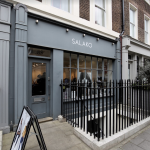Today’s consumers are shopping on a number of different channels. And even if they aren’t converting, each interaction with your brand is a part of the buyer journey. The growth of omnichannel consumer behavior hasn’t made in-person shopping obsolete; even the most connected consumers demand physical interactions.
Considering this multi-channel consumer behavior, retailers need to step up and meet shoppers where they’re at. The investment is worth it; customers who buy both online and in-store have a 30% higher lifetime customer value. Selling online-only isn’t enough to compete in the current retail landscape.
The Omnichannel Consumer
Personal Brand Interactions
In-person interactions humanizes your brand in the eyes of customers. That’s arguably a large part of the reason why nearly three-quarters of shoppers still value the traditional in-store experience, and almost half consider in-store shopping part of their routine.
Unique Experiences
Consumers want more than just human experiences — they demand unforgettable experiences. One-third of shoppers say that those unique experiences are enough to give them a reason to visit your store. Make your pop-up shop a unique brand experience, not just a place to shop, to set yourself apart from your competition.
Product Research
Online is the key channel for research: 81% of shoppers conduct research online before making a purchase. But that’s not enough to make all consumers informed enough to make a decision. 25% prefer to browse online first and go to the store afterwards, so they can see, touch and try the product out in person before buying.
Buy Online, Pick Up (and Return) In-Store
The BOPIS trend is a growing one: More than half of consumers choose this option. And for online purchases, delivered to the store or customer’s home, the ability to make returns at a physical location is important too. (82% of shoppers like to have this option.)
Urgent Purchase Needs
Instant availability is one area where online hasn’t been able to compete — yet. One-third of consumers will go to an actual store if they need something quickly.
Nordstrom, Sears and Kmart provide curbside pickup for their online customers — a move meant to capture customers with urgent needs while still driving online sales.
Online Retailers Have Opportunity
If the ecommerce monolith Amazon has recognized the opportunity in pop-up shops, that signifies the opportunity to other online retailers, too. Pop-up shops are giving e-tailers the chance to build stronger customer relationships and compete with other players in their vertical.
Zappos also jumped on the idea. To compete with brick-and-mortar retailers like Adidas and Nike, the online shoe retailer introduced The_ONES, an omnichannel experience that incorporated a dedicated landing page, shoppable Instagram and series of pop-up shops (or “pop-ins”).
For the 2017 holiday season, Kylie Cosmetics teamed up with brick-and-mortar retailer Topshop to open seven pop-ups across the United States. This pairing of an online and traditional retail brand isn’t the first of its kind — Amazon partnered with newly acquired Whole Foods for the holiday season, too.
The opportunity is there for brands that sell both online and in person, too. Retailers like J. Crew, Neiman Marcus, Walmart and Home Depot have shifted their focus from e-commerce back to the brick-and-mortar experience.
How to Expand Beyond Your Online Channels
There are a number of ways to expand from your online-only selling channels into new, in-real-life opportunities.
Open a Brick-and-Mortar Store
The actual costs of opening a permanent brick-and-mortar store vary — expect to invest anywhere from $2,000 to $100,000. But the results can be just as significant, especially considering the fact that you own the entire customer experience. A permanent brick-and-mortar location introduces retailers to a litany of new opportunities through increased visibility, a permanent presence in the community, new partnerships and in-store events.
Partner With a Brick-and-Mortar Store
This arrangement is far more cost-effective, but it also requires lots of discovery and relationship-building. Online businesses can partner with brick-and-mortar stores that frequently showcase small retailers’ items, or ask retailers if they’re open to a shop-in-a-shop pop-up. You can also look at coffee shops, restaurants and spas for an opportunity to get a physical presence, or the popular STORY retail space in NYC.
https://www.instagram.com/p/BbSCTaLAD-6/?hl=en&taken-by=thisisstory
Wholesale
Similar to partnering with brick and mortars, distributing your product wholesale can get your brand in front of customers in a number of locations. This is an especially feasible option for online retailers that have a lot of stock or can get products in bulk.
Sell at Events and Festivals
Opening a booth at a local event or festival, or a large one that’s popular with your target customer base, is another avenue for online businesses to establish a real-life presence.
Open Your Own Pop-Up Shop
A pop-up shop also allows you to own and create the entire customer experience, from entry through post-purchase. Pop-ups are also a great alternative to a long-term rental, as it provides a testing ground — especially if this is your first go at in-person selling. Establish a strong physical presence and strengthen customer relationships with a pop-up shop for your online business.
- How to Promote A Pop-Up Event on Social Media - July 17, 2018
- Photo Flip: 10 Unique San Francisco Pop-Up Spaces that Will Make Your Event Stand Out - July 6, 2018
- A Guide to Employee Training for Your Next Pop-Up Event - June 5, 2018





